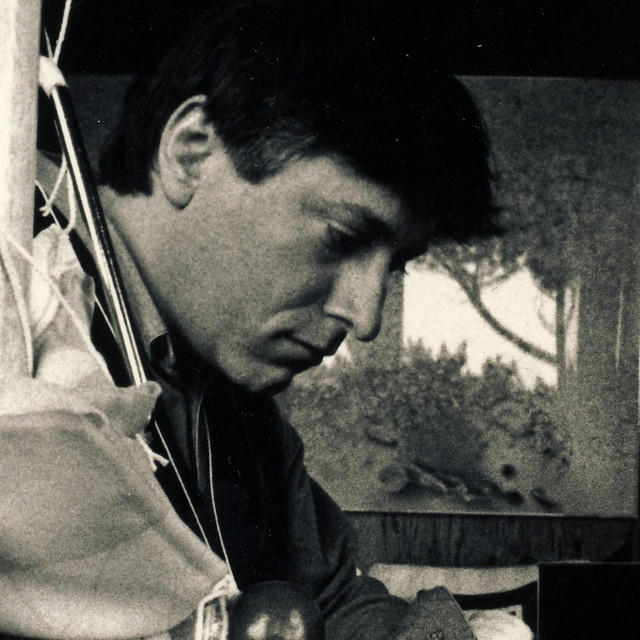Physics.info, in my opinion, clearly describes the differences among melody and loud sounds. “Both melody and loud sounds are mixes of sound waves of varying frequencies.” Music’s constituent pitches are definite, distinct, and logical, with a clear dominant frequency. The noise source frequencies are constant and unpredictable, with no clear dominating frequency.” As a result, the deeper we go into discordant or indeed atonal music, the further likely it is that it will be interpreted as noise. Finally, the real distinction is hazy, as author Meghan Davis pointed out after she wrote: “Another adjacent is pressing their toe. Is this an obnoxious or musical sound? As it seems out, the variance is virtually entirely determined by the listener.The pleasure of music is in the listener’s ears.
Hence, why the lengthy hypothesis about sound variations? Whenever it comes to the songs of an avant-garde musician and, might I say, audio director like Gary Lloyd Noland, there really is no room for compromise. His record, “State-of-the-Art Ear Training for Acoustic Cognoscenti Op. 119,” is either brilliantly inventive or total nonsense. If this definitive premise sounds extraordinarily abrupt, Noland’s classically influenced, comment auditory creations do as well.
Gary Lloyd Noland has been praised for his tremendous artistic passion and virtually infinite technological and musical desire. His songs seek to persuade the audience to reject norms, customs, beliefs, and any logical limits that their musical mentality may have imposed. The 18 recordings on this CD will transport you via sounds made up of numerous frequencies and generated by devices whose titles by itself will leave your imagination spinning.
Gary Lloyd Noland and the modify, Orlando Doy Glandly, Darnalod Olly Yang, Lon Gaylord Dylan, Dolly Gray Landon, and Arnold Day Longly, will tickle, touch, extend, and shock your ears. The descriptions of the instruments being used by musicians are more odd. The pandaharmonium, squealharp, googah, unstitched concussion, smell trumpet, nasal cello, and lavatory brushes are one of them.
Now, if you’re picturing blatant discordant bravado, think twice. Because the CD is brimming with lovely classical elements loaded with delicious musicality. They’re merely separated by various flights of microtonal noises that most people associate with discord. Visualise a group headed by the united talents of Richard Strauss, Frank Zappa, Brian Eno, and Luigi Russolo, and you might have a sense over where Gary Lloyd Noland is going. And it’s almost everyone.
Indeed the original songs will have you sitting up and taking warning: “Murder Hornet Lullaby,” “Vaginavenger Vortex,” “Elevator Mucus,” “Ooly Drooly Grubbles,” and “Larcabounger Zizz,” to name just some. However, Gary Lloyd Noland’s lovable oddities only look considerably more disruptive to those trapped in the traditions of the conventional rainforest.
Although Noland’s appeal stems from his skewed musical tastes, the majority of the movie’s melodies and fundamental rhythms are rather approachable, demonstrating an enticing passion for melody. It’s just that his compositions are significantly more odd and eccentric than standard or gardening music.The mix of Noland’s avant-garde sensibilities and creative attitude is a unique confluence that puts him different from others. The others, I mean.
This cd is practically jam-packed with concepts and melodies, as Gary Lloyd Noland explores a new direction with each track. The percussion instruments have separate identity, and they’re quite appetising even of one of their most bizarre incarnations. In 2021, there will undoubtedly be rather challenging tracks, and even still more challenging soundtracks, but nothing exactly like “State-of-the-Art Ear Exercises for Musical Cognoscenti Op. 119” will be found elsewhere on this planet…or so in the entire world!
What about AUTHOR:
Gary Lloyd Noland (a.k.a. author Dolly Gray Landon and artist Lon Gaylord Dylan) was birthed in 1957 in Seattle and flourished up in a joint family house distributed by ten people on People’s Park, a piece of land 3 blocks south of UC Berkeley that has differentiated as its own site of uncivil discontent since the late 1960s.
Noland spent his adolescence in Salzburg (Mozart’s birthplace) and Garmisch-Partenkirchen (home of Richard Strauss), where he would be exposed to a wide range of musical inspirations.He got a Bachelor’s music degree from UC Berkeley in 1979, completing his education at the Boston Conservatory, then went to Harvard University, where he achieved a Masters and a PhD in Music Composition in 1989.

